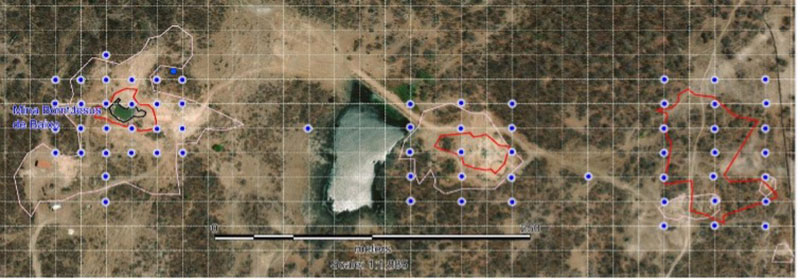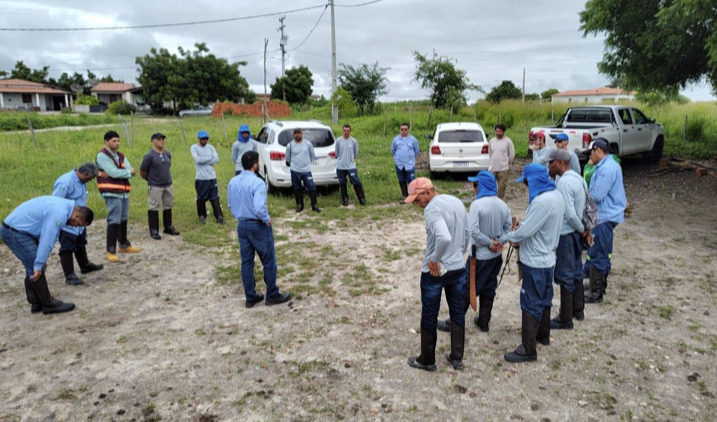Lithium’s new Samba King Oceana Lithium to start 3000m Brazilian drilling program next month

Oceana Lithium is all set to get its groove on in Brazil, with a 3000m drilling program to confirm pegmatites at Solonópole. Pic via Getty Images.
Oceana Lithium is poised to begin a 3000m drilling program at its Solonópole lithium project in Brazil, taking the biggest steps yet to confirm the prospectivity of the pegmatite rich South American lithium project.
Unlike brine rich Bolivia, Chile and Argentina – known as the Lithium Triangle – Brazil has emerged as a new vanguard in the history of the South American lithium industry.
Pro-mining and known for its endowment of gold, iron ore and nickel, Brazil’s lithium potential exists in Australian style spodumene-endowed pegmatites.
This kind of lithium is quicker to market and accounts for more than half of the electric vehicle lithium feedstock sold globally, mostly from Western Australia’s giants.
Oceana’s (ASX:OCN) Bom Jesus de Baixo pegmatite will see the first drilling from the explorer in May, where exposed pit walls and pit floor pegmatite have returned high grade assays previously of up to 3.61% Li2O.
While not necessarily representative of the grade across the whole pegmatite, it is an impressive start.

Drilling for high grade pegs
The pegmatites in Bom Jesus de Baixo pit, where the grab samples were taken and announced in March, include grades of up to 1.87% in weather spodumene, 3.09% Li2O in amblygonite and 3.61% in lepidolite.
They are among the best results seen so far across over 17km of intermittent outcropping lithium bearing pegs across the Solonópole project.
Three linear outcrops have been identified at Bom Jesus over an east-west strike length of more than 500m.
It will be the initial focus of the 3000m scout drilling program, planned on a tight 20m by 20m grid to assist in determining the actual pegmatite dimensions and dip at each location.
On top of that drilling will help outline the lithium grade and mineralogy of Bom Jesus, with infill-drilling to determine if the three outcrops are linked.

Diggin’ a trench
Results from five soil geochemistry grids have also confirmed anomalous lithium results from sampling in 2017 in soil and rock, defining lithium of up to 445ppm, tantalum and tin anomalies where trenching and drilling has been planned.
Trenching will start over the Zilcar II, Rolados, Urubu, Lapinha and Nira Li anomalies within 15km of the spodumene-bearing pegmatite at Bom Jesus de Baixo, which will map subcrop and better constrain soil anomalies to target drilling.
On top of that systematic soil sampling has started over the recently secured N Green permit, and will follow up targets at Solonópole, where higher grade anomalies were found in 2017, with line cutting 50% done.
Four field exploration teams are now on the ground, with trenching across the sites, which include garimpeiro (prospector) workings, setting the stage for RC drilling once the pegmatite subcrop is better understood.
An in-fill soil sampling program to infill wide-spread 2017 anomalies identified by previous owner Cougar Metals on 200m spaced lines with 25m sampling stations north-south to cut across the typical pegmatite strike at Solonópole.
Starting in March, 27,000 samples will be taken over a six month period.
Selected pegmatites will be subjected to ground magnetics and radiometric geophysics to test their response, along with hi-res drone surveys to more accurately map the project.
This article was developed in collaboration with Oceana Lithium, a Stockhead advertiser at the time of publishing.
This article does not constitute financial product advice. You should consider obtaining independent advice before making any financial decisions.
Related Topics

UNLOCK INSIGHTS
Discover the untold stories of emerging ASX stocks.
Daily news and expert analysis, it's free to subscribe.
By proceeding, you confirm you understand that we handle personal information in accordance with our Privacy Policy.








